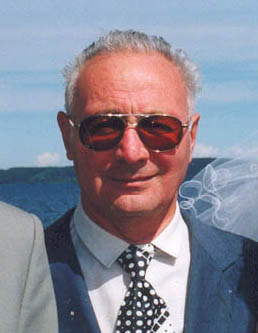2019 GMC Sierra MultiPro Tailgate

The 2019 Sierra debuts a GMC exclusive, industry-first MultiPro Tailgate featuring six unique functions and positions, offering enhanced second-tier loading and load-stop solutions, a standing workstation mode, and easier access to items in the box.
To view the new functionality of this innovative tailgate, visit https://www.youtube.com/watch?v=QlVR6b27dEc
TRIZ Application: By using just Principles 1 Segmentation, 7 Nesting, and 15 Dynamization, GMAC was able to develop one of the most beneficial improvements to the simple one-dimensional truck tailgate.
- Details
- Category: TRIZ Features
Top 10 Technologies to Watch in 2020
by Peter Fretty 
DEC 04, 2019
| We live in an age where new technologies hit the market almost daily. The question is, will manufacturers find meaningful applications for the latest advances? As technologies mature, here are ten we see with the most promise for the year ahead. |
5G Network (1)
As manufacturers continue to embrace mobile technologies, 5G provides stability and speed needed to wirelessly process growing data sets common in today's production environments. 5G is crucial as manufacturers close the last-mile gap to connect the entire array of devices to the IIoT.
Drones (2)
From the ability to make just-in-time component deliveries to potentially fueling AI engines with operations observations, drones represent a significant opportunity to optimize production environments.
Wearables (3)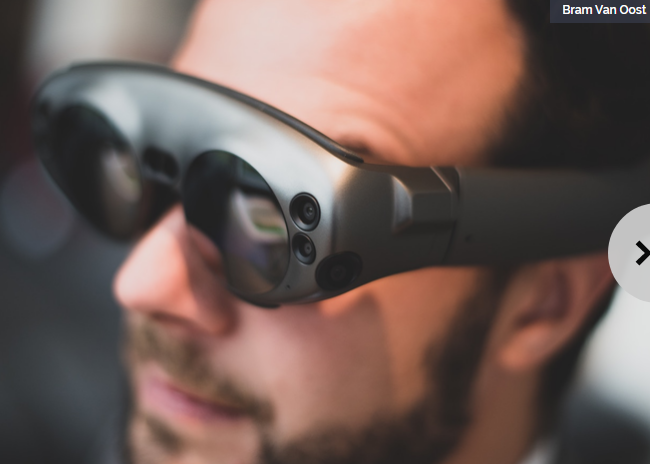
From monitoring employee health to providing augmented training and application assistance, a growing array of wearable form factors represent an intriguing opportunity for manufacturing to put a host of other technologies in action, including AI, ML, virtual reality, and augmented reality.
3D Printing and Additive Manufacturing (4)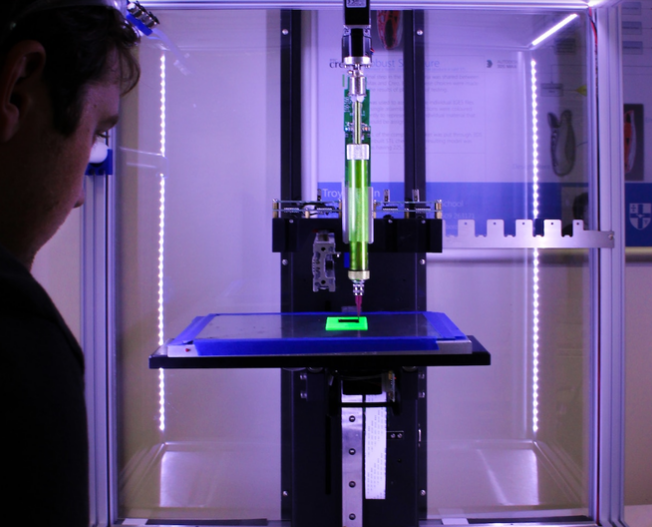
The rise of the experience economy is ushering in the need for mass customization. The ongoing maturity of 3D printing and additive manufacturing are answering the call with the ability to leverage an ever-growing list of new materials. Continued software developments are simplifying the process, limiting the need for post-printing tasks.
Edge computing (5)
As production equipment continues to advance, always waiting for data to move across the network before taking action is no longer a reality. Edge computing puts vital processing power where it is needed, only transmitting vital information back through the network.
Blockchain (6)
As an inherently secure technology, the manufacturing-centric use cases for blockchain include auditable supply chain optimization, improved product trust, better maintenance tracking, IIoT device verification, and the reduction of systematic failures.
Quantum computing (7)
According to the recent IBM report, "Exploring quantum computing use cases for manufacturing," quantum computing's entry into the manufacturing realm allows companies to solve problems impossible to address with conventional computers. Potential benefits include the ability to discover, design and develop materials with more advantageous strength-to-weight ratios, batteries that offer significantly higher energy densities as well as more efficient synthetic and catalytic processes that could help with energy generation and carbon capture.
Industrial Internet of Things (IIoT) (8)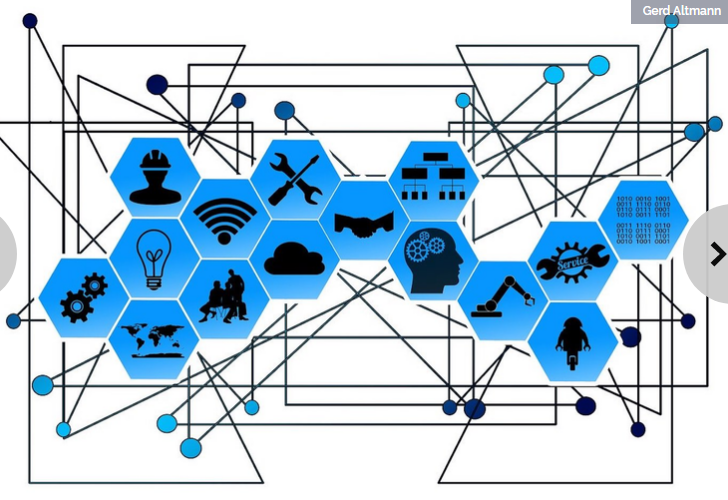
In a data-fueled environment, IIoT provides the means to gather data in near real-time from seamlessly connected devices. The infusion of other technologies on this list (edge computing, 5G, AI/ML) continue to expand IIoT's reach and potential to collect and leverage all available data.
Robotics and Automation (9)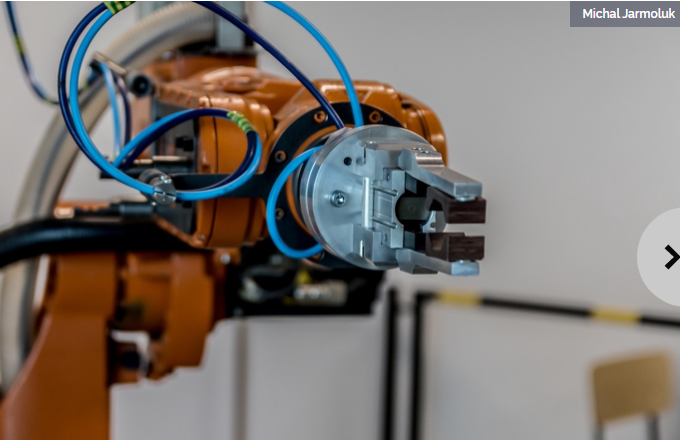
The increasingly collaborative nature of today's robots is refining how manufacturers maximize automated environments—often leveraging cobots to handle difficult yet repetitive tasks. The potential to collaborate intensifies as the AI/ML penetrate this space.
Artificial Intelligence (AI) and Machine learning (ML) (10)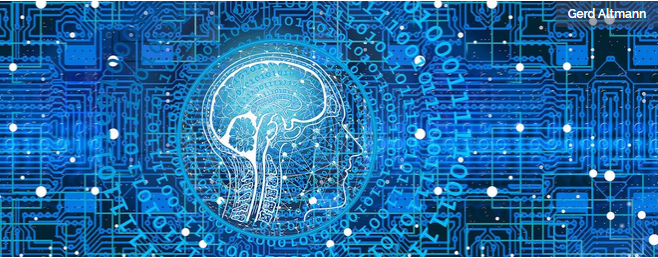
AI and more specifically ML, empower manufacturers to benefit from data-based insights specific to their individualized operations. Advancing the evolution from preventative to predictive maintenance is just the beginning. AI fuels opportunities within generative design, enhanced robotic collaboration and improved market understanding.
********************************************************************************************
- Details
- Category: TRIZ Features
UV Sterilization: Far-UVC light kills airborne flu viruses without danger to humans
The use of overhead far-ultraviolet C light in public spaces could provide a powerful check on seasonal influenza epidemics, as well as influenza pandemics.
John Wallace Apr 1st, 2018
Continuous low doses of far-ultraviolet C (far-UVC) light can kill airborne flu viruses without harming human tissues, according to a new study at the Center for Radiological Research at Columbia University Irving Medical Center (New York, NY).1 The findings suggest that use of overhead far-UVC light in hospitals, doctors’ offices, schools, airports, airplanes, and other public spaces could provide a powerful check on seasonal influenza epidemics, as well as influenza pandemics.
Scientists have known for decades that broad-spectrum UVC light, which has a wavelength between 200 and 400 nm, is highly effective at killing bacteria and viruses by destroying the molecular bonds that hold their DNA together. This conventional UV light is routinely used to decontaminate surgical equipment. “Unfortunately, conventional germicidal UV light is also a human health hazard and can lead to skin cancer and cataracts, which prevents its use in public spaces,” says study leader David Brenner.
Several years ago, Brenner and his colleagues hypothesized that far-UVC could kill microbes without damaging healthy tissue. “Far-UVC light has a very limited range and cannot penetrate through the outer dead-cell layer of human skin or the tear layer in the eye, so it’s not a human health hazard. But because viruses and bacteria are much smaller than human cells, far-UVC light can reach their DNA and kill them,” Brenner said.
Excimer lamp sources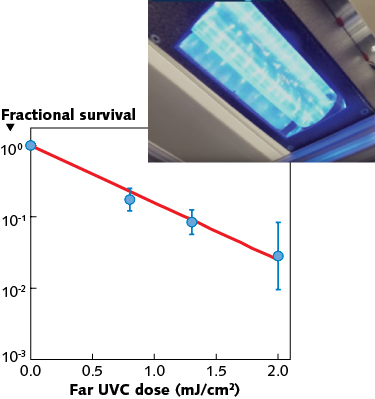
Brenner and his group use filtered excimer lamps emitting in the 207–222 nm wavelength range (see figure). For example, 207 nm light is emitted by a krypton-bromine excimer lamp, while 222 nm is emitted by a krypton-chlorine excimer lamp. Brenner’s group started with the 207 nm lamp, publishing results on sterilization of bacteria in 20132—in 2017, the results at 222 nm for bacteria were reported.3
Antiviral effectiveness of 222 nm far-UVC light produced by an excimer lamp (inset) is shown in terms of fractional survival as a function of dose; the means and standard deviation for each treatment are shown in blue.
The latest study showed that far-UVC at 222 nm inactivates more than 95% of airborne aerosolized H1N1 influenza viruses at a low dose of 2 mJ/cm2. Because light at wavelengths from 207 to 222 nm is wholly absorbed by the dead outer layer of skin and by the outer tear layer of the eye, these wavelengths are safe for humans (unlike the commonly used 254 nm germicidal wavelength that can cause skin cancers, including deadly melanoma).
As a result, continuous, very low-dose-rate far-UVC light could be integrated into overhead lamps for hospitals, schools, airports, and so on—potentially drastically reducing influenza. As a bonus, UVC light could prevent the spread of airborne microbial diseases such as tuberculosis.
 While the use of UV germicidal irradiation to kill germs is not new, the use of conventional (not far) UVC requires some way of greatly limiting peoples’ light exposure, such as the addition of louvers to prevent direct exposure to UV. These setups intrinsically are more limited in their usefulness, as they don’t irradiate the entire room. In contrast, the use of low-level far-UVC fixtures safely irradiate areas full of humans and their clouds of viruses.
While the use of UV germicidal irradiation to kill germs is not new, the use of conventional (not far) UVC requires some way of greatly limiting peoples’ light exposure, such as the addition of louvers to prevent direct exposure to UV. These setups intrinsically are more limited in their usefulness, as they don’t irradiate the entire room. In contrast, the use of low-level far-UVC fixtures safely irradiate areas full of humans and their clouds of viruses.
At a price of less than $1000 per lamp, a cost that would likely decrease if the lamps were mass-produced, far-UVC lights are relatively inexpensive. “And unlike flu vaccines, far-UVC is likely to be effective against all airborne microbes, even newly emerging strains,” Brenner says.
REFERENCES
1. D. Welch et al., Sci. Rep. (2018); doi:10.1038/s41598-018-21058-w.
2. M. Buonanno et al., PLOS One (2013); see https://goo.gl/MqJT5V.
3. M. Buonanno et al., Radiat. Res. (2017); see https://doi.org/10.1667/rr0010cc.1.
- Details
- Category: TRIZ Features
Bloomberg Innovation Index -2020
Germany Breaks Korea’s Six-Year Streak as Most Innovative Nation
By Michelle Jamrisko and Wei Lu
January 18, 2020, 2:15 AM EST
- Singapore leaps into third place in annual Bloomberg index
- The U.S. falls a notch while China moves up a spot, narrowing the gap
- Germany took first place in the 2020 Bloomberg Innovation Index, breaking South Korea’s six-year winning streak, while the U.S. fell one notch to No. 9.
- Singapore’s leap into the third-place ranking returns it to its post from two years ago.
The annual Bloomberg Innovation Index, in its eighth year, analyzes dozens of criteria using seven metrics, including research and development spending, manufacturing capability, and concentration of high-tech public companies.
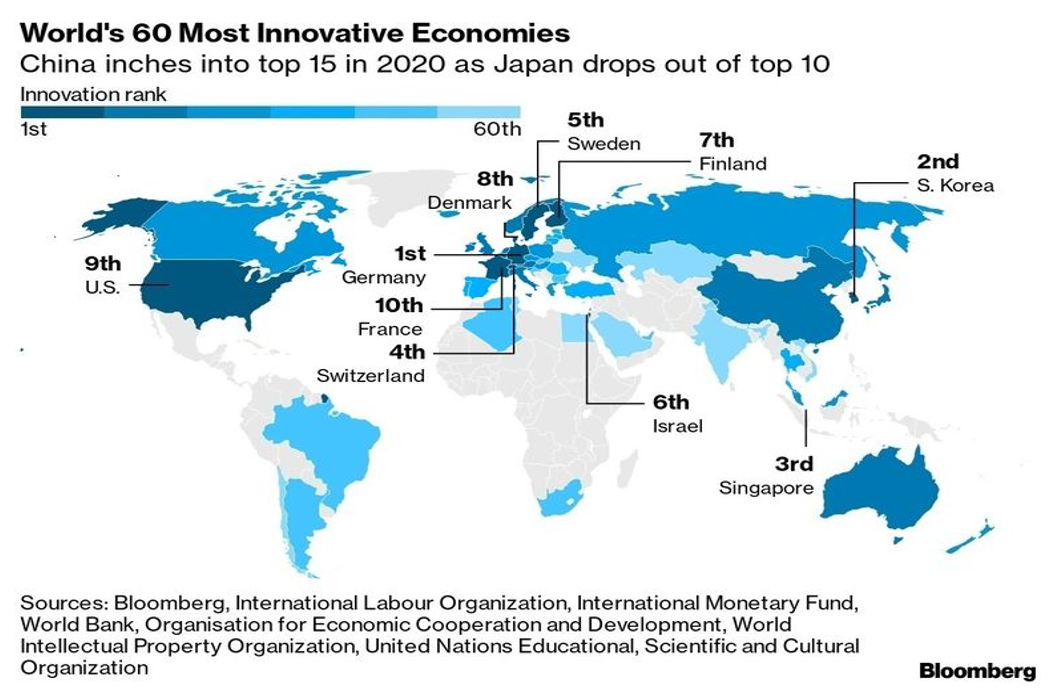
The ranking shed light on the ability of economies to innovate, a key theme at the annual World Economic Forum in Davos, Switzerland, taking place Jan. 21-24.
In the Bloomberg Index, Germany scored three top-five rankings in value-added manufacturing, high-tech density, and patent activity. South Korea lost its crown in part due to a relative slump in productivity, falling to No. 29 from last year’s No. 18 ranking in that category.
“The manufacturing sector is still highly competitive and a source for innovation,” Carsten Brzeski, chief economist at ING Germany, said in an email. “Germany’s performance in such indicators is still strong and much better than the recent economic weakness would suggest.”
Still, Brzeski cited several reasons why Germany shouldn’t be complacent about its innovation standing. Its services innovation is much less impressive, and about a third of research and development spending is in the auto industry, meaning “disruption and longer weakness of this sector could weigh on Germany’s innovative strength,” he said.
Germany’s status as a manufacturing giant has been built on the car-making industry, but pollution concerns, trade conflicts, and slowing economies have weighed on demand.
Education Worries
Lack of innovation around tertiary education in Germany is an “increasing worry,” Brzeski added, especially as the global economy shifts more toward services and away from manufacturing. “The German government would be well advised to use the ongoing fiscal surplus to invest and safeguard Germany’s role as an innovator.”
South Korea’s narrow loss is hardly a reason to anticipate a crumbling in its innovative prowess. R&D spending “determines life or death for South Korean companies,” with tech-oriented heavyweights like Samsung Electronics Co., LG Electronics Inc., and Hyundai Motor Co. leading the economy, said Chang Suk-Gwon, a business management professor at Seoul’s Hanyang University.
“We don’t have any other natural resources -- we only have our brains to turn to,” said Chang. “The expression that’s often bandied about in South Korea is the ‘super gap.’ It’s about widening whatever lead South Korea has -- or else China will catch up.”
Singapore’s rise to third place overall, from sixth last year, was aided by productivity and value-added manufacturing gains, while it retains a best-in-world ranking for tertiary-education efficiency.
Less Rosy
The news is less rosy for the top advanced economies. The U.S., which was No. 1 when the Bloomberg index debuted in 2013, fell one spot to No. 9 since last year’s ranking. Japan dropped to No. 12, down three spots for the same-sized decline in last year’s index.
The world’s second-biggest economy, China, edged higher by one spot to No. 15. It held onto a second-place ranking on patent activity and broke into the top five for tertiary efficiency.
China’s strong performance probably shows that it was “busy building up and readying for a prolonged trade war and thus urgently needed to do a lot of in-sourcing, and getting up the value chain of manufacturing,” said Francis Tan, investment strategist at UOB Private Bank CIO Office in Singapore. China has President Donald Trump “to thank for accelerating their plans.”
The U.S. can at least celebrate holding onto world-beating performances in two categories: high-tech density and patent activity. Among the 20 exchange-traded companies with the highest research and development expenditures in their most-recent fiscal years, half were from the U.S., led by Amazon.com Inc., Alphabet Inc., and Microsoft Corp. Germany was second with four: Volkswagen AG, Daimler AG, Siemens AG, and Bayer AG.
What Our Economists Say
“Innovation is a critical driver of growth and prosperity. China’s move up the rankings, and the U.S. drop, is a reminder that without investment in education and research, trade tariffs aren’t going to maintain America’s economic edge.”
--Tom Orlik, Bloomberg Economics chief economist
Big winners among 2020s ranked economies were led by Slovenia, which gained ten spots to No. 21 on the back of a 34-tier improvement in patent activity. Chile climbed seven spots to No. 51, not losing ground in any category and making particular strides in tertiary efficiency.
Alternatively, the biggest loser in this year’s index was New Zealand, falling five spots to No. 29 amid a slide in value-added manufacturing performance.
Four economies entered the Innovation Index for the first time: Algeria -- which made an especially strong debut at No. 49 -- as well as Egypt, Kazakhstan, and Macao.
The 2020 ranking process began with more than 200 economies. Each was scored on a 0-100 scale based on seven equally weighted categories. Nations that didn’t report data for at least six categories were eliminated, trimming the total list to 105. Bloomberg publishes the top 60 economies.
Bloomberg terminal users can see additional data here:
For a summary table
- For patent activity
- For research personnel concentration
- For tertiary education
- For technology company density
- For productivity
- For manufacturing, value-added
- For research and development expenditures
- Details
- Category: TRIZ Features
PRODUCT DEVELOPMENT JUN 29, 2018 SHARE
How China is Doing Science -- Inventing the future in Chinese labs.
Richard P. Suttmeier, Professor Emeritus of Political Science, University of Oregon
Genetic engineering, the search for dark matter, quantum computing and communications, artificial intelligence, brain science – the list of potentially disruptive research goes on. Each has significant implications for future industries, defense technologies and ethical understandings of what it means to be human.
And, increasingly, the notable achievements in these fields are coming not from the great centers of science in the West, but Beijing, Shanghai, Hefei, Shenzhen and some other Chinese cities that make up China’s extensive research system. Inevitably, the question arises: How much of the future is being invented in Chinese labs?
The current trade negotiations between China and the United States have brought China’s rapidly developing technological capabilities into clearer focus. As China aims to achieve leadership in emerging key technologies, the U.S. is quick to attribute much of Chinese progress to the theft of American intellectual property and forced technology transfers. But, as someone who has followed China’s scientific development for years, I’ve seen dramatic improvements in China’s internal innovative capacity, along with the science base needed for success in the knowledge-intensive industries it seeks to master.
In its quest for scientific achievement, China’s research and development spending have snowballed over the past two decades. It’s now second only to the United States. China has become a leading contributor to the world’s science and engineering literature, with Chinese papers in selected fields attracting an increasing number of citations.
Generous government science budgets have allowed China to build world-class facilities in some fields. And China is home to one of the world’s largest research communities, now enriched by high-quality domestic university programs as well as scientists returning from abroad with advanced degrees from the world’s leading universities.
But how is the enterprise of science in China organized? Who sets the priorities? And are its mechanisms of governance suitable for sustained progress?
Chinese Science, By Sector
In contrast to the U.S., where basic research is concentrated in universities, where there are strong traditions of corporate R&D and where research in government labs supports the missions of government agencies, the institutional arrangements for science in China reflect a different design.
Though each has been extensively reformed, Chinese science today is still largely conducted in five institutional sectors. The Chinese Academy of Sciences (CAS), a legacy institution from the 1950s, oversees some 120 institutes – including China’s “big science” facilities – and three institutions of higher education. Following a series of reforms over the past two decades, scientists in many of its labs now engage in world-class research across a range of disciplines, including quantum physics, mathematics, and neuroscience.
Universities comprise the second institutional system, with the top schools competing with CAS for talent and prestige. The university-based research was not emphasized in the pre-reform era. But over the past two decades, China’s top universities have emerged as important centers of basic and applied research, while also promoting a culture supportive of high-tech entrepreneurship.
China’s industrial enterprises constitute the third institutional sector. Two of the most significant changes over the past two decades has been the growth of company-based R&D, especially in information and communications technology fields, and the emergence of non-state-owned, market-oriented high tech firms. R&D expenditures in the enterprise sector now amount to roughly 80 percent of the nation’s total.
Government research institutes under civilian ministries – such as those for agriculture, public health, environmental protection, natural resources and so on – constitute the fourth system.
Finally, research and development in support of the military constitute a fifth sector, one which remains largely opaque. In cooperation with civilian sectors, and guided by civil-military integration policies, it’s producing increasingly sophisticated national defense systems.
In the last few years, the Chinese government has introduced policies to encourage collaborative research across these sectors. In particular, China has established national laboratories and other significant new national research centers, inspired by the national lab experience in the U.S. and other countries. These new institutions – cross-disciplinary and problem-focused by design – are engaged in world-class research of international interest. For example, the University of Science and Technology in Hefei is home to a leading facility for quantum physics and quantum information.
The government has also sponsored the establishment of major government-owned national research centers within leading Chinese companies. For instance, iFlytek, a leader in voice recognition technologies, hosts one on human-machine interactions. China National Offshore Oil Corporation hosts another on natural gas hydrates.
Encouraging Policy from the Top
In contrast to the current U.S. administration, which has yet to define a clear policy for science and technology, China’s quest for global scientific leadership is driven by its top political leaders who see China’s future wealth and power is derived from its research and innovation capabilities.
Chinese science policy, as a result, is characterized by a strong emphasis on national needs as defined by a top-down design process. At the national government level, funding for research has become more centralized. It’s now channeled through programs, or “platforms,” administered by the Ministry of Science and Technology (MOST). These do permit “bottom-up” investigator-initiated proposals, and efforts are being made to strengthen professional reviews and assessments of research projects. Nevertheless, the funding system is still characterized by strong state direction.
The themes of national science policy are also found in the initiatives of local governments, many of which have become major funders of R&D and partners in building the country’s new research facilities.
The emphasis on national needs had, until recently, biased the nation’s research away from basic science. Chinese policymakers, however, have come to realize that leadership in science-based industries requires basic research conducted at international frontier levels. As a result, financial support for basic research is increasing.
But, a controversial administrative reorganization in March of this year changed the status of China’s key agency for supporting basic science, the National Natural Science Foundation of China (NSFC). No longer an independent agency under China’s State Council, NSFC is now an entity under the broad administrative direction of the Ministry of Science and Technology.
The NSFC had been seen as a pioneer in promoting a culture of basic science through the support of original investigator-driven, peer-reviewed research. Members of the scientific community now fear that NSFC operations will succumb to the more applications-oriented, bureaucratic procedures of its new home ministry.
Socialist Science
China’s aspirations for scientific distinction and its aggressive science policy in support of those aspirations is occurring in a political environment that’s quite different from that of other countries with strong traditions of science.
The differences have come into sharper focus under the leadership of President and Party Chairman Xi Jinping. While Xi has redoubled political support for science, he has also altered the political climate by insisting on more demanding ideological commitments from the academic community to his worldview. By strengthening the role of the Communist Party in research institutions and universities, by harnessing China’s technological progress to the development of a surveillance state, and by leaving little room for privacy and dissent, Xi will achieve his goals.
Combined with China’s long tradition of bureaucratic rule, these initiatives set the models of science-state relations, and Chinese scientific development more generally, apart. Other leading nations in science have political systems based on law and the protection of human rights, on free and open communications and on civil society traditions, which permit the autonomous operation of professional societies.
The Chinese model, arguably, has been quite successful in producing rapid development over the past 30 years of scientific and technological “catch-up.” China has certainly caught up in selected fields and, in some, is advancing the frontier. But, whether this model of science-state relations is suitable, over time, for the kinds of original innovation and creative scientific breakthroughs envisioned by the leadership – and for managing the complex ethical issues arising from new technologies – are among the more intriguing questions about China’s future.
- Details
- Category: TRIZ Features
- Details
- Category: TRIZ Features
Courtesy of Haydn Shaughnessy, Contributor,
“I write about enterprise innovation”
Tech 3/07/2013 @ 6:32AM |50,392 views Forbes Magazine
What Makes Samsung Such an Innovative Company?
The Samsung headquarters (Photo credit: Wikipedia)
There are critics of Samsung who argue that its success is mostly due to copying and then tweaking the innovations of others. There is a good deal of truth in this, especially around the early Galaxy designs.
But Samsung is a global leader in screen technology, TVs, batteries, and chip design. So in terms of innovation it is doing a lot right. But we know very little about how.
We know how its competitors innovate – we look at Google and see the 20% time, the big adjacencies, the search for disruption, the bold statements about the future of autos, for example.
Samsung Engineers Perfect Marketing Storm For Galaxy S4 Ahead of 14th March Solving Apple's Innovation Problem 
We know that within Apple when a project gets to a critical stage, the company assigns three teams to its development, each of which competes against the other. We know the importance of design thinking, an attribute Google is learning about. And of customer experience.
What does Samsung do in comparison? How does it line up against these American masters or conversely are Google and Apple good enou gh to compete against Samsung?
gh to compete against Samsung?
There’s no doubt that patent circumvention is an aim when Samsung innovates. From its early forays into innovation, competing against Toshiba in washing and drying machines, Samsung has chased patents in areas where its competitors appear to have protection and has oriented its innovation efforts to find new patentable ideas in its competitors’ backyard (see, for example, this Samsung presentation).
There’s nothing unusual about that. It is a sideshow. Two developments convinced the company in the late 1990s and early 2000s that they could adopt a systematic approach to innovation and that is what seems to underpin their current success.
The first development provides a broader explanation for Samsung’s innovation capacity. In the late 1990s they were able to tap into a source of cheap scientific expertise in the former Soviet Union.
Samsung has nurtured a close relationship with the Russian Academy of Science since then. There is a framework agreement between the two parties. And the Korean Government has its own agreement under which it funds Korean small businesses to develop projects on the back of Academy research. Samsung meanwhile appears to help the Academy to increase its patent count and to exploit its inventions.
There is an undated copy of the framework agreement between them online and here is an extract:
Academy warrants that Institutes of RAS have the necessary authority to transfer Inventions on separate contracts (“Concrete Agreement”) to Samsung for evaluation, and support Samsung to share part in ownership of Inventions and Patents
One early advantage for Samsung was cheap fundamental science from Russia. But even now Samsung is able to buy Russian expertise at relatively low rates of between $3,000 to $5,000 per month.
Compare that with Google and Apple – in the post-9/11 era access to the world’s best talent has become increasingly difficult because of a reluctance to grant enough visas. Samsung had that problem cracked. But then again didn’t Apple and Google – both are a magnet for talent.
Has the Russian connection shown concrete value for Samsung?
- Details
- Category: TRIZ Features
TRIZ Feature
Alexander Selyutsky - a key figure in the history of TRIZ!
Selyutsky Alexander Borisovich was born April 6, 1933 to an intelligent Jewish family residing in Leningrad. During the World War II the plant where his father was working was evacuated to the Urals, and the family (the parents and Alexander) moved to Chelyabinsk. Here, Alexander graduated from high school. He wanted to go to a military school, but didn’t pass vision test and entered the Chelyabinsk Polytechnic Institute. In his first year he was forced to learn boxing (because of frequent anti-Semitic attacks) and became a Komsomol activist.
After graduation, he was sent to Petrozavodsk Onega tractor plant, where he worked as a designer. He continued leading a very active social life, organized and led voluntary militia patrolling the streets of the city because the situation was very criminal. In the search for more satisfying work he became interested in patenting, completed appropriate courses and became a patent agent.
In 1960, Alexander married Dolly Naumovna Audleys, and had a daughter Alla in 1961. The same year G.S Altshuller published a book " “Learn how to invent"[1] . After reading this book in 1965 Selyutsky wrote a letter to Altshuller. This letter started their acquaintance by correspondence. Since then, Alexander became one of the most dedicated Altshuller’s disciples and an active promoter of the emerging new science.
They finally met in 1968 in Dzintary (near Riga), at the seminar organized by the Central Board of VOIR (state leading inventors’ and innovators’ society) that invited Altshuller and several of his associates. It was the first time that Alexander and others got a chance to work under the direct guidance of Altshuller and to learn from him. Later, in 1983, Alexander participated as one of the instructors in the seminar conducted by G.S. Altshuller in Moscow at the Institute for continuous education for chemical and petroleum industries.
- Details
- Category: TRIZ Features
Quantifying the TRIZ Levels of Invention – A tool to estimate the strength and life of a Patent Navneet Bhushan Crafitti Consulting Pvt Ltd, (www.crafitti.com) Email: This email address is being protected from spambots. You need JavaScript enabled to view it. Bangalore, INDIA
Introduction
TRIZ (Theory of Inventive Problem Solving) classifies inventions into five novelty levels (For example see [1]). At level 1 are slight modifications of the existing systems. Typically they are localized within a single sub-‐system. At level 2 are those inventions that resolve a system conflict or contradiction (called a technical contradiction between two parameters of a system), using usually inventive solution or inventive principle used to solve similar problems in other systems. This is what resulted in the most used TRIZ tool of contradiction matrix and 40 inventive principles. In fact, since 77% of inventions were at level 1 or level 2, TRIZ in popular press and by many consultants/trainers have been reduced to exploring and explaining contradiction matrix and 40 inventive principles. However, it is the deeper understanding that leads to level 3 and above inventions where TRIZ can be very powerful. At level 3, the inventions change one subsystem or resolve the system conflicts in a fundamental way.
- Details
- Category: TRIZ Features
By Haydn Shaughnessy, Contributor, 
“I write about enterprise innovation”
Tech 3/07/2013 @ 6:32AM |50,392 views Forbes Magazine
Full article at: http://www.forbes.com/sites/haydnshaughnessy/2013/03/07/why-is-samsung-such-an-innovative-company/
Samsung is a global leader in screen technology, TVs, batteries, and chip design. So in terms of innovation it is doing a lot right. But we know very little about how.
Two developments convinced the company in the late 1990s and early 2000s that they could adopt a systematic approach to innovation and that is what seems to underpin their current success.
The first development provides a broader explanation for Samsung’s innovation capacity. In the late 1990s they were able to tap into a source of cheap scientific expertise in the former Soviet Union.
In 2009 BusinessWeek reported that Samsung relied on its relationships with Russian experts for its smartphone software development, adding: “Russian brains helped Samsung develop the image-processing chips in its digital TVs and refine its frequency-filtering technology that significantly reduced noise on its now-ubiquitous handsets.”
But a second effect of the relationship with Russian science was the introduction of TRIZ, an innovation method that Samsung adopted from 2000 onwards but which only reached American companies from the mid-2000s onwards (Intel is a user).
TRIZ is a methodology for systematic problem solving. Typical of its origins in Russia, it asks users to seek the contradictions in current technological conditions and customer needs and to imagine an ideal state that innovation should drive towards.
Samsung had early successes with TRIZ, saving over $100 million in its first few projects. It was also adopting Six Sigma at the time.
But it was TRIZ that became the bedrock of innovation at Samsung. And it was introduced at Samsung by Russian engineers whom Samsung had hired into its Seoul Labs in the early 2000s.
In 2003 TRIZ led to 50 new patents for Samsung and in 2004 one project alone, a DVD pick-up innovation, saved Samsung over $100 million. TRIZ is now an obligatory skill set if you want to advance within Samsung.
At the Samsung Advanced Institute for Technology, Hyo June Kim, who wrote The Theory of Inventive Problem Solving, a foundation text on TRIZ published in Korean, trained over 1,000 engineers across Samsung companies in 2004 alone.
What we know from this is how Samsung approaches innovation. Rather it is based on developing a creative elite. This explains how Samsung used TRIZ to get to its Super AMOLED displays.
Samsung Electronics has a sense of crisis that we have been a fast follower and we can not survive anymore in this position. Instead of leading the industry by developing innovative products, we have followed fast what the leading companies had developed. Top management pointed out this and asked employee not to be a fast follower, but to be an innovative leader.
At Samsung even the subsidiary CEO has to take TRIZ training. From looking at the various presentations I estimate that engineers get about 15 days of training plus 7 days specific project work. That’s quite an investment in method and people.
So the answer to why Samsung is so innovative – with at least two major product announcements this month – is that it is heavily invested in its people, it goes in search of special talent wherever it can find it, but specifically made astute moves into Russia early on; it targets its innovations towards specific competitors and patents that it wants to overhaul (as Apple did under Jobs); and it has an innovation culture based on extensive training, repeatable methodology and creative elite formation, backed by the highest levels of management.
To read the full article, click the link above.
- Details
- Category: TRIZ Features
TRIZ Feature
Is anti-virus a Necessary Evil?
Using TRIZ Ideality and Contradictions to find out
what is Necessary and what is Evil
By- Umakant Mishra, Bangalore, India
This email address is being protected from spambots. You need JavaScript enabled to view it., http://umakant.trizsite.tk
Using Ideality to determine what is desirable
According to the concept of Ideality, the best anti-virus is “no anti-virus” or a “virus free environment where there is no need of any anti-virus”. However, for many practical reasons the above Ideal Final Result (IFR) is not possible to achieve in the present circumstances. When the ultimate IFR is not possible to achieve the problem solver has to take a step backward and consider a lower level IFR1. The best solution is that which is closest to the Ideal solution. The best solution is that which fulfils all the desirable functions of an anti-virus program without having any of its drawbacks.
- Details
- Category: TRIZ Features
Inside TRIZ
Case Study: Applying Triz in a non-technical setting for a fuel-cell start-up
By Jean-Francois Denault
1. Abstract
TRIZ is a systematic tool used to generate creativity and solve technical problems, but there is little litterature of its use in non-technical situations. This brings up the question: How can TRIZ be used to generate creativty and solve a non-technical problem?
The objective of this experimentwas to use TRIZ in a non-technical setting. As such, the article is very exploratory in nature. Working with a private company, we identified and defined a non-technical problem, and experimented with TRIZ to generate creativity in an attempt to solve the problem. KEYWORDS: Creativity, Brainstorming, TRIZ, Problem Solving
2. Introduction
2.1TRIZ in a non-technical setting
TRIZ is a Systematic Tool which is used to generate creativity to solve technical problems. Since it is a powerful tool to generate ideas, there is an incentive to use it in a non-technical setting as a creative thinking tool. For example, Zlotin believed that TRIZ concepts, such as ideality, contradiction and the systems approach are fully applicable to non-technical problems, and that analytical tools and psychological operators are directly applicable to accommodate non-technical applications (Zlotin, 2000).
Brainstorming (BS) is the “standard” method for creative thinking. However, when comparing BS to TRIZ, BS’s random nature becomes apparent. Where as BS can be described as “a way of looking for an idea accidently”, TRIZ is “equipped with technique, process, and knowledge database as a comprehensive methodology of a creative solution of a problem” (Nakamura, 2001). This makes TRIZ an attractive tool to explore.
- Details
- Category: TRIZ Features
TRIZ Features

Dana W. Clarke, Paul Nobles and Peter Ulan
Why Do We Need Innovation?
It’s all about the money;
unresolved problems = financial losses and lost opportunities
By Dana W. Clarke, Paul Nobels and Peter Ulan
“Innovation is the most vital factor in shaping a corporation’s success throughout the coming years. For several decades, corporations have optimized products, processes and services for efficiency and quality; without losing control of quality, it is now time to innovate. Today’s corporate challenge is to unshackle its innovation capacity to control growth and profitability while achieving leadership in its targeted markets. Global-economic forces and financial constraints have made innovation-driven growth more essential than at any other time in history. Corporations face an unprecedented need to stay ahead of continuously accelerating global changes, unyielding pressure for rapid results, and fierce competition from corporations that are aggressively pursuing their own innovation-driven futures.”
- Details
- Category: TRIZ Features
TRIZ Features
 April 2012
April 2012
Dr. Toru Nakagawa
Creative Problem-Solving Methodologies TRIZ/USIT: Overview of My 14 Years in Research, Education, and Promotion
The capability of solving problems creatively is most desirable and indispensable not only for individual persons, regardless a student or a working adult, but also for companies, organizations, communities, and even countries. Since I joined Osaka Gakuin University in 1998, I have been working principally on the theme of 'methodologies for creative problem solving' in research, education, and promotion of social penetration. On retiring the University in March this year, it is my great pleasure to have a chance of publishing here an overview of my work for these 14 years.
The core of my working activities has been the research on TRIZ ('Theory of Inventive Problem Solving') and USIT ('Unified Structured Inventive Thinking'). I have attended and presented at international conferences on TRIZ every year, and extended USIT (i.e. a unified and simplified TRIZ) further to find a new paradigm called 'Six-box Scheme' for creative problem solving. In the field of education, besides several other classes on ordinary information science, I have been teaching on this theme in a lecture class and also in 3rd and 4th year seminars, where my students and I have made several successful case studies of solving familiar problems.
- Details
- Category: TRIZ Features
 March 2012
March 2012- Details
- Category: TRIZ Features

Studies have estimated that only one out of 3000 raw ideas (unwritten) or 300 submitted ideas makes it to eventual success. At each stage gate, decision makers select the ideas to be taken forward and identify the ones to be kept on hold or discarded. By applying TRIZ, we can take inspiration from living systems – cells, organisms, ecosystems, organizations, societies etc. to manage our complex systems better.
- Details
- Category: TRIZ Features

- Details
- Category: TRIZ Features
TRIZ Features
 April 2011
April 2011
Cathie M. Currie
Cathie M. Currie, Ph.D. is a cognitive social psychologist who specializes in medical and science education. She heavily engaged with problem solving and innovation thinking skills, authentic assessment, and minority access to higher education. She is also an Advisor to Altshuller Institute.
In an attempt to understand how to better teach TRIZ, Dr. Currie has written and article to explain, in simple terms, the various methods of how people learn. Dr. Currie contends that tinkering, a cherished hobby of yesteryear, has reemerged as a novel catalyst for student engagement and higher-level thinking in thousands of school classrooms and after-school programs across our country. We can intuitively perceive that tinkering stimulates active participation in learning. However, educators need to know how cognitive and educative gains are produced in tinkering experiences to allow us to maximally develop the educative experience.
- Details
- Category: TRIZ Features

